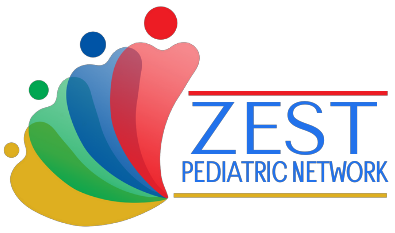New Year’s Resolutions for Healthier Kids: Consider One of These Practical Tips to Improve Your Child’s Physical and Mental Well-Being
January is a logical time to reflect upon your parenting and your child. You don’t need to wait for a check-up to do this. Parenting is about constantly adapting to your child’s ever changing developmental, health, and behavioral needs. Parents consistently reflect on where they can make an impact, and the New Year is a perfect time to consider making a few adjustments.
Unlike your personal resolutions, try making some resolutions WITH your child. And to model the behavior, let them know you have made personal resolutions too. Simply making resolutions public increases the likelihood of success.
As we have mentioned in previous blogs, the Zest model allows doctors to partner with parents in creating the healthiest, best lives for their children. In addition to traditional medical care, we focus on seven main pillars to do this. These pillars are:
1. Nutrition
2. Sleep
3. Physical Activity
4. Play
5. Resiliency
6. Screen Time
7. Other Healthy Habits
Consider making a change in one or more of these areas as we begin a new year to help kids develop healthier habits for their body and mind. Here are a few suggestions.
Nutrition
Cook something new with your child – maybe a new vegetable or a common one prepared a new way, a different fish, a creative salad. Involve your child in picking AND cooking the new food. Build their palate repertoire and their confidence in cooking.
Sleep
Healthy sleep habits always need to be tweaked, especially after the holidays. Some ideas include eliminating screens from the room, enhancing the bedtime routine with joint reading, being more consistent with bedtime, or learning to sleep with the light off in the room. Again, choose something to do together, but let your child own it.
Physical Activity
If you child is not already getting daily physical activity, January is a perfect time to start. Work with them to identify the activity – even if as simple as going for a walk with the dog, dancing at home, jump roping, or riding a stationary bike. There are so many choices. The goal is to start something, for some amount of time, on most days of the week. Slowly increase the time and variety. Better yet – to encourage this – do it together! Exercise will help with sleep, school performance, behavior, and overall confidence.
Play
No matter the age of your child, creativity, mindfulness, and resiliency can be fostered through crafts. Work with your child to identify an outlet for their creativity – it can be as simple as drawing, building models or Legos or the like, crafts, and jigsaw puzzles. It should involve a screen.
Resiliency
The New Year is a logical time to discuss with the family a few ways to increase your family connectedness. Examples include increasing how often you have family dinner or family game night (note: this is very different than family movie night). Maybe set-aside some time with each child to discuss what they are grateful for that week or ask them to reflect upon something nice they did for someone else during the week. The point, increase the family togetherness and the personal reflection (which we all need help remembering to do).
Screen Time
This one is easy – each family member, including you, makes a commitment to make one small change with screens. If you can all make the same change, great, but not necessary. Could be no screens during meals. No screens in the bathroom. Turn off notification from at least one app. No phones in the bedrooms. Turn off screens when not watching – no longer have them just on in the room. Take your pick, so many options here.
Enjoy working with your child to make small and consistent changes that can lead to significant improvements in overall health and well-being. By working together as a family and making these resolutions fun and achievable, you can help your children develop lifelong healthy habits
